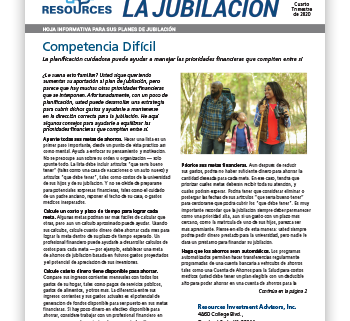Most people don’t spend too much time thinking about end-of-life planning on a daily basis, but doing so is part of a comprehensive financial planning process. To get you warmed up to the basics of estate planning, this article focuses on two basic tools you have available that make up the foundation of estate planning — a will and a living trust.
Basic Definitions
A will is a legal document that states what you want to happen to your assets and who will raise your minor children after you die. A living trust is an agreement you make with a trustee — who holds legal title to your property. It is created and goes into effect while you are still alive.
Similarities
Wills and living trusts have some basic similarities:
- Distribute property to beneficiaries. In both a will and a living trust, you can provide instructions on how to distribute your property upon your death to the beneficiaries you choose.
- Can be revised. If you wish to make changes, wills and living trusts both can be revised any time prior to your death as long as you remain mentally sound.
Differences
A will:
- Requires appointment of an executor. This person will be in charge — under court supervision — of executing your estate after you die, including resolving any claims from creditors, finalizing any legal matters, and distributing your remaining assets to beneficiaries.
- Goes into effect only after you die. If you become disabled, physically or mentally, a guardianship may need to be established to manage your estate. Consult a qualified attorney for more information.
- Allows the appointment of a guardian for minor children. In most states this is only possible with a will.
- May require probate. Probate is a legal process, supervised by the court, where your will is validated, all of your debts are settled, and your remaining assets are distributed to your beneficiaries. The probate process may take several months to complete.
- May be simpler to make. A will is generally easier to set up than a trust.
A living trust:
- Takes effect immediately. As soon as you create and transfer your property into it, a living trust is in effect.
- Requires transfer of property. Property is not transferred directly to your beneficiaries — it must first be transferred into the trust you have created. Typically, for personal property, you can do an assignment of your property to the trust. However, assets such as real estate, automobiles and non-tax-qualified financial accounts may need to be retitled into the name of the trust. You should also review your beneficiary designations for life insurance and tax-qualified accounts with your estate planning attorney. If you do not transfer assets into your trust during your lifetime, the assets may still go through probate court.
- Avoids probate. If property is properly transferred to the trust during your lifetime, it will generally avoid probate upon death, which can often expedite the administration process.
- Requires appointment of a trustee. This person is in charge of the assets held in the trust and distributes them after your death. The position is similar to an executor of a will. To maintain control of your property while you are still alive, you may serve as the initial trustee. You should name a successor trustee to carry out your wishes if you become disabled or die.
- Maintains privacy after death. Since a will typically goes through probate, it becomes a public document. A living trust usually does not, and can be used to keep your affairs private.
- Estate planning flexibility. Because a living trust does not require ongoing court oversight, a trust is often used in situations where an outright distribution of assets to the beneficiaries may not be desirable. This can be for a number of reasons, including age of beneficiary, poor financial management, or unstable personal issues.
Wills and trusts are both legal documents that your estate planning attorney will use to help you and your family achieve your estate planning goals. Wherever you are in the process of planning for your estate, it is best to educate yourself and stay informed. Tax and probate laws vary from state to state. You should always consult with a qualified estate planning attorney in your state.

